Netherlands 2023 "Prehistoric animals (III)"
| <prev | back to index | next> |
| Issue Date | 14.11.2023 |
| ID | Michel: N/A, Scott: N/A, Stanley Gibbons: N/A, Yvert et Tellier: N/A, Category: pR |
| Design | stamps: studio026, Velp animal models: ManimalWorks, Rotterdam |
| Stamps in set | 15 |
| Values |
3 Mini-Sheets of 5 stamps each, with face value "1",
every Mini-Sheet contain 3 stamps with reconstruction
and 2 stamps with fossils of the prehistoric animal: Mastodon, Anancus arvernensis Blunt-snouted dolphin, Platalearostrum hoekmani Giant Auk, Pinguinus impennis Value indication 1 for mail up to and including 20g to a destination within the Netherlands. |
| Size (width x height) | stamps: 30mm x40mm Mini-Sheet: 170mm x 122mm |
| Layout | 3 Mini-Sheets of 5 stamps each |
| Products | None |
| Paper | normal with phosphorus pressure |
| Perforation | |
| Print Technique | Offset, 3 colors: cyan, magenta, yellow and black |
| Printed by | |
| Quantity | 5,000 of each Mini-Sheet |
| Issuing Authority | PostNL |
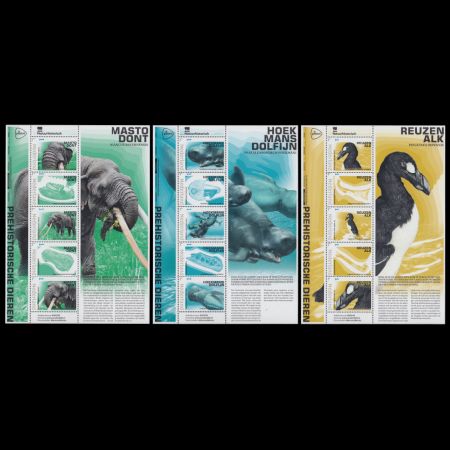
On November 14th, 2023, the Post Authority of the Netherlands (PostNL), issued the third set 3 of 12 Mini-Sheets with personal stamps of "Prehistoric Animals".
Personal stamps are stamps proposed by some individuals or organizations, accepted, printed and sold by PostNL.
The first 3 Mini-Sheets were issued on June 13th, 2023.The second 3 Mini-Sheets were issued on September 26th, 2023.
The denomination on these stamps is "1", the rate for items weighing up to 20g with destinations in the Netherlands and has a value of €1,01 at the time of issue. Each stamp sheet in the "Prehistoric Animals" series includes five personal stamps in five different designs. Three stamps feature various images of the prehistoric animal in its natural habitat. The other two stamps feature fossils of the same animal, surrounded by drawn earth layers in which that fossil was found.
Fossils of all prehistoric animals depicted on the stamps were found on the seabed of the southern North Sea.
This time two prehistoric and one extinct animals were depicted on the stamps: Mastodon (Anancus arvernensis), Blunt-snouted dolphin (Platalearostrum hoekmani), and the Giant Auk (Pinguinus impennis - extinct animal).
Mastodon, Anancus arvernensis


|
The mastodon entered Europe approximately 7.2 million years ago and around 7 million years ago dispersed into Africa.
The mastodon disappeared from Asia and Africa around the end of the Pliocene, approximately 2.6 million years ago.
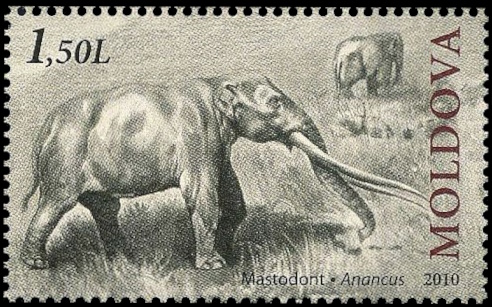 |
| Anancus arvernensis on stamp of Moldova 2010 |

|
| Anancus arvernensis on stamp of Slovenia 2018 |
Anancus arvernensis could reach shoulder heights of around 2.5–2.6 metres, with a volumetric estimate suggesting a body mass of around 5.2 to 6 tons, comparable to living African Elephants.
The tusks were largely straight and lacked enamel and were slender, and proportionally large. One large tusk of the species Anancus arvernensis from Stoina, Romania measures 3.71 metres in length with an estimated mass of 70 kilograms.
Dental microwear analysis of Anancus arvernensis specimens from the Early Pleistocene of Europe generally suggests that it was a browser, consuming twigs, bark, seeds and fruit.
Anancus arvernensis was widely distributed in western Europe in the late Pliocene and Early Pleistocene: Italy, France, Germany, The Netherlands and England.
Several molars of the Mastodon were fished from the North Sea floor. These have been dredged from, among others, the Thornton Bank and De Reeper of the coast of Zeeland.
Thornton Bank is located at the boundary between the Belgian and Dutch portions of the continental shelf. This site has long been known for a mix of remains of Tertiary marine mammals and Early Pleistocene terrestrial mammals. It is one of the few North Sea locations where remains of the mastodon Anancus arvernensis, have been dredged up from the seafloor.
The location De Reeper with greatly varying water depths off the coast of the province of Zeeland is important for insight into the distribution of an Early Pleistocene fauna including the mastodon of Anancus arvernensis.
In addition, Anancus arvernensis is also known from onshore deposits in East England and plays an important role as evidence for a significantly lower global sea level and the exposed southern bight of the North Sea at the end of the Pliocene and the beginning of the Pleistocene.
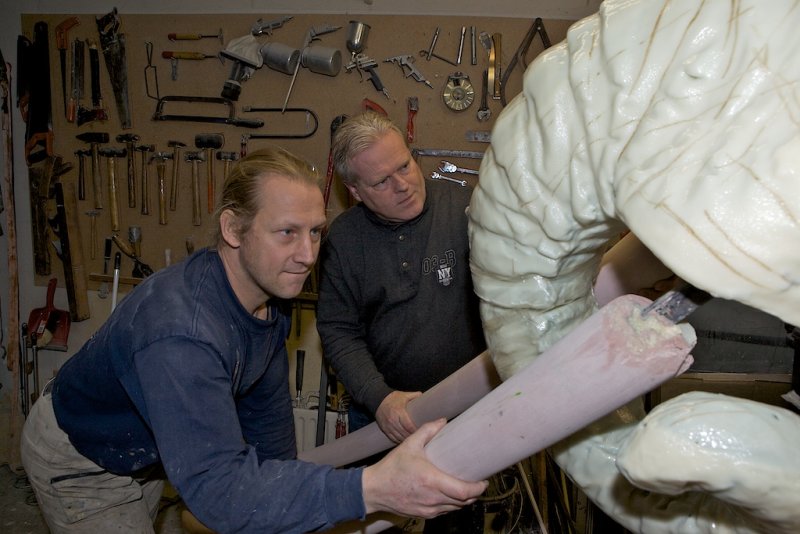
|
| Dick Mol (in the background) and Remie Bakker (in the foreground) work on reconstruction of Anancus arvernensis in December 2009. |
This dry land must have been the route for the mastodons and shortly thereafter the southern mammoths, Mammuthus meridionalis, to expand their distribution into East England.
The life-size reconstruction (220 cm at the shoulders) of the Mastodon, Anancus arvernensis, was created by Mr. Remie Bakker for the Musée Crozatier in LE PUY-EN-VELAY in France in 2010, based on the fossils of museums of Italy and France. As for many other prehistoric animal reconstructions, used by studio026 as motif for the stamps, the reconstruction of the mastodon was created by Mr. Bakker under supervision of Mr. Dick Mol, also known as "Sir Mammoth".
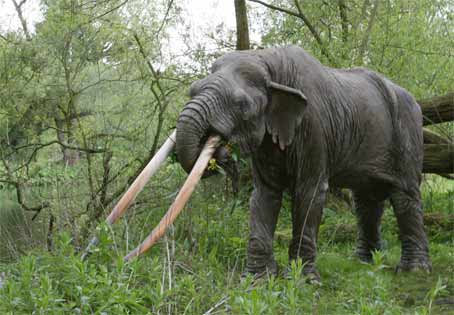 |
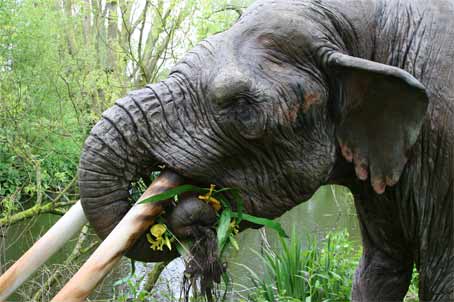 |
|
| Life size reconstruction of Anancus arvernensis created by Mr. Remie Bakker in 2010 under supervision of Mr. Dick Mol, for the Musée Crozatier in LE PUY-EN-VELAY in France. Image credit: ManimalWorks. | ||


|

|
Hoekman's dolphin, Platalearostrum hoekmani
The blunt-snouted dolphin (Platalearostrum hoekmani) is a prehistoric pilot whale known from a single specimen, consisting of partial fragments of the rostrum, maxilla, premaxilla, and vomer (these bones are all part of the front of the skull - essentially the dolphin’s face). The fossil was discovered by Albert Hoekman on board a fishing trawler in the North Sea in 2008 and described in 2010 by Klaas Post and Erwin J.O. Kompanje.
Platalearostrum hoekmani, who lived during the middle Pliocene to early Pleistocene (4.5 - 2.5 million years ago), with estimated width of 6 meters was smaller then the modern pilot whale, it is believed to have had a balloon like structure atop its rostrum. This organ is a fatty mass that produces sound waves and plays a role in echolocation and communication of the animals. The jaw of the dolphin contained only six teeth.
The stamp designs were based on a digital illustration created by Mr. Remie Bakker in 2009 for “Diensia” magazine, to illustrate the article of Klaas Post and Erwin J.O. Kompanje where they described the dolphin species. Mr. Post supervised the work of Mr. Bakker to enable him to create an accurate model of the dolphin.
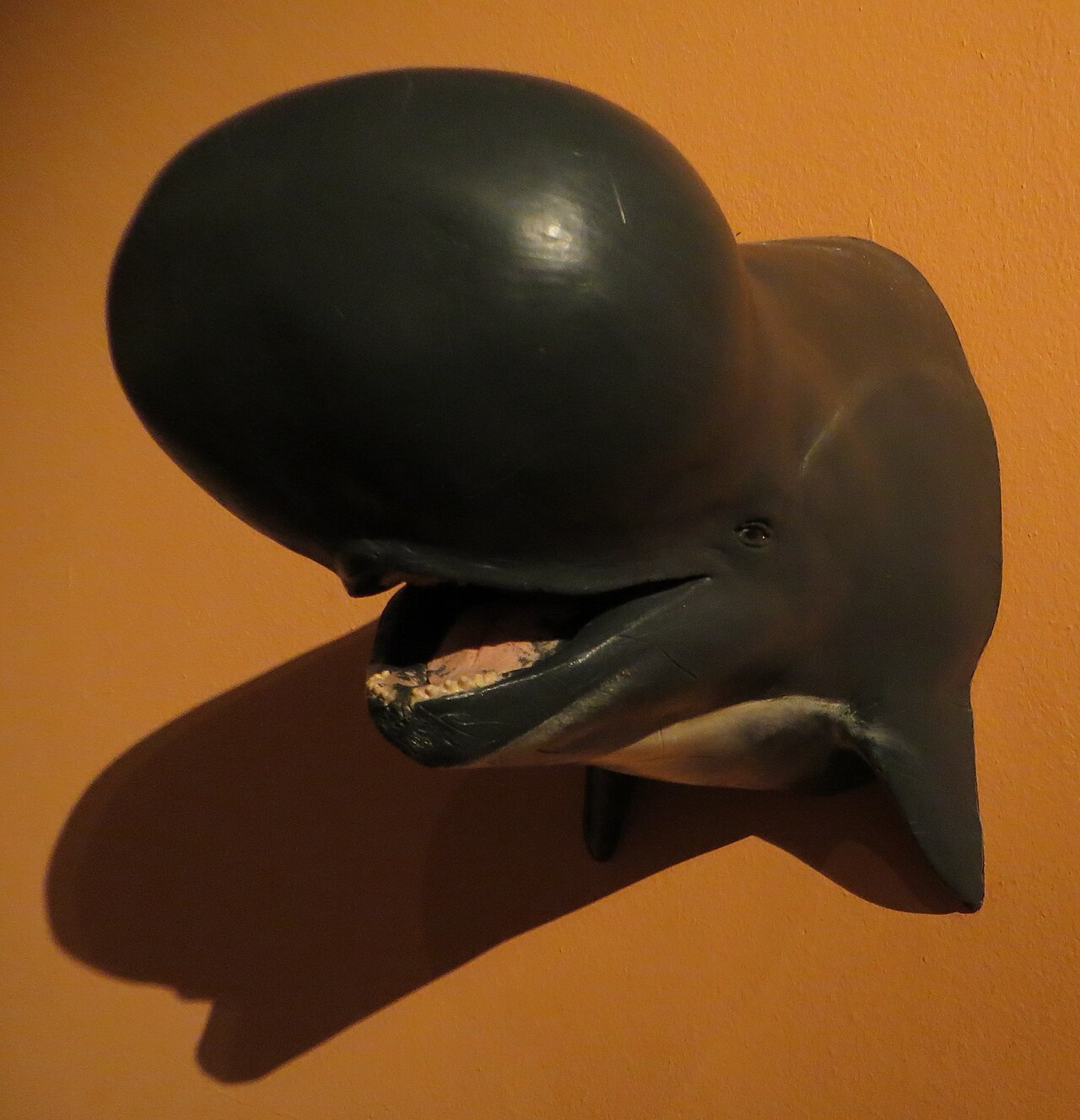 |
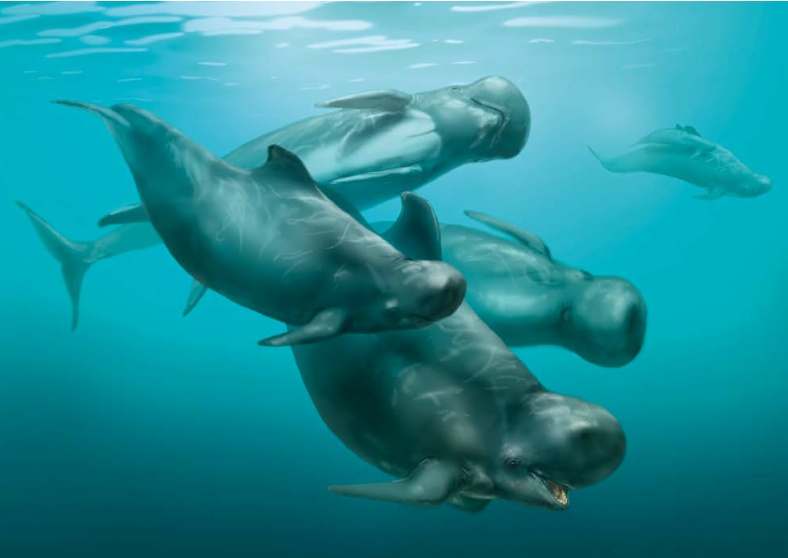 |
| Reconstruction of the head of Platalearostrum at the Museum of Natural History, Rotterdam. Image credit: Wikipedia | Reconstruction of Platalearostrum by Mr. Remie Bakker for “Diensia” magazine. Image credit: ManimalWorks |
Great Auk, Pinguinus impennis (extinct rather prehistoric animal)
The great auk (Pinguinus impennis) is a species of flightless alcid that became extinct in the mid-19th century. It was the only modern species in the genus Pinguinus. It is not closely related to the Southern Hemisphere birds now known as penguins, which were discovered later by Europeans and so named by sailors because of their physical resemblance to the great auk, which were called penguins.
Similar to all other animals depicted on the "Prehistoric Animals" personal stamps of the Netherlands from 2023, bones of the Great Auk were Dredged from the North Sea. Their age was estimated to be 3500 years old.

Products and associated philatelic items
| Examples of Circulated Covers | ||
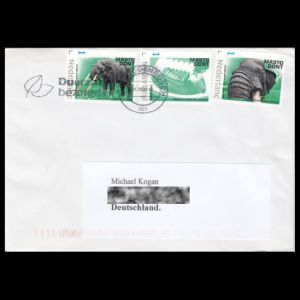 |
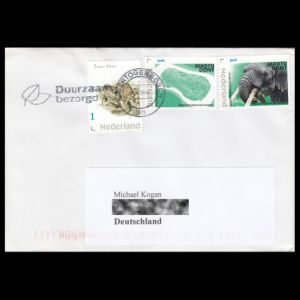 |
|
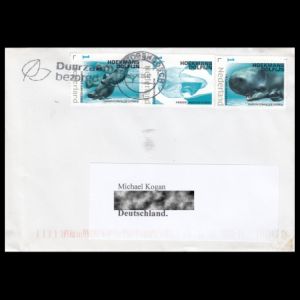 |
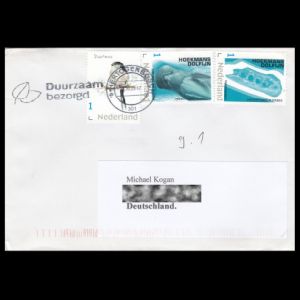 |
|
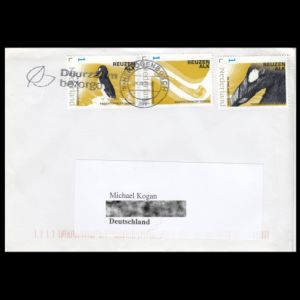 |
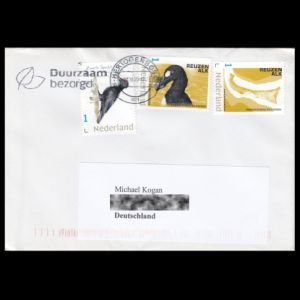 |
|
References
- Technical details:
PostNL: [1], [2], [3]; WOPAplus. -
Mastodon, Anancus arvernensis:
Wikipedia,
"The paleontological and archaeological finds from the bottom of the North Sea", Staringia Nr. 17, 2022 -
Blunt-snouted Dolphin, Platalearostrum hoekmani,:
Wikipedia,
"A new dolphin (Cetacea, Delphinidae) from the Plio-Pleistocene of the North Sea", by Klaas Post & Erwin J.O. Kompanje, published in "Deinsea" magazine in 2010. -
Great auk, Pinguinus impennis:
Wikipedia, -
Manimal Works agency of Remie Bakker:
official website,
Acknowledgements

|
- Many thanks to Dr. Peter Voice from Department of Geological and Environmental Sciences, Western Michigan University, for the draft page review and his very valuable comments.
- Many thanks to Mr. Dick Mol, a Dutch paleontologist for his help finding information about the animals depicted on these stamps, for the draft page review and his very valuable comments.
| <prev | back to index | next> |